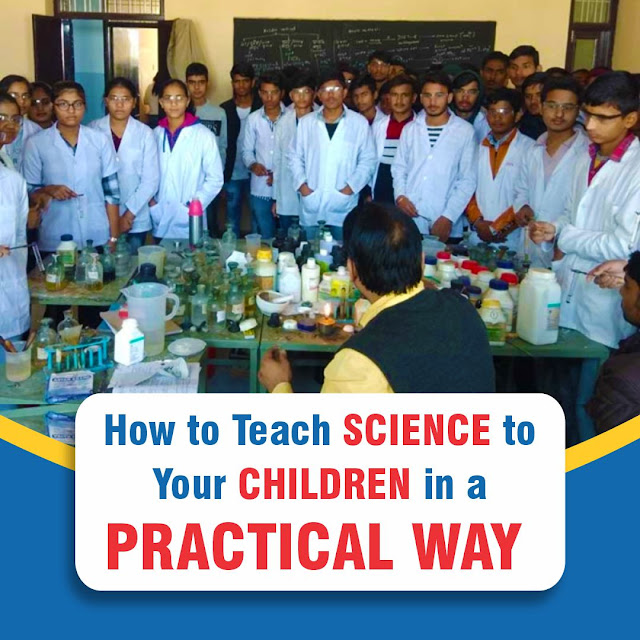How to Teach Science to Your Children in a Practical Way?
Science is
all around discovering the world around us. So our children need to explore the
surroundings and learn how science can work practically in daily lives. That’s
why we came up with 11 methods to engage your child in science activities
practically? But first, what are these activities?
What are the science activities?
First, let
us, as Ideal Education Point (New Choudhary Public School), a Science School In Jaipur, tell you about the
two science activities because we know you are curious.
● Observation.
● Experimentation.
How to fascinate children in science
activities?
As an Ideal
Education Point for children, we will
introduce the 12 methods to teach your children science practically.
Build curiosity: This is the most
powerful method to get your child interested in science experiments. The curiosity
of what’s going on around your child will make your child drive the interest
and make it more likely that your little ones are fascinated for a more
extended amount of time.
Labeling things: Take some daily use
objects from homes such as fruits and vegetables and label these things with
words linked to fruits or vegetables’ features such as size, color, texture,
etc. you can ask questions about how these things are different and similar to
each other while doing so.
Learning tasks outside of school hours: We as Ideal
Education Point (New Choudhary Public School) advise you, if
possible, to do activities outside of school with your child, for example,
going to a garden and observing plants, see if you can think of any other
activity like this.
Science experiments: Your children can try
out science experiments step-by-step, as shown in video tutorials and demos.
Backyard Science is a good TV show to understand science in a fun way.
Reading material about the scientific way: You can narrate
children’s books linked to the scientific method with your little one. It will
expose your child to some basics and understand what is being taught when doing
complicated tasks later on.
Recycling old things into new projects: You and your child can
take used products such as water bottles, jars, etc., and make something new
from these things, using household items. For example, you can make wind chimes
from plastic bags, stained glass window circles made by using jars as a
stencil, an aquarium with plants, or floating bubbles using plastic bottles and
soap.
Involve science into daily tasks: Try adding science into
your child’s regular duties to make it more fun and exciting. It can be as
simple as planting sunflowers in the ground on non-cloudy days to make your
child learn the causes of wind patterns leading to heat waves,
Experiment with balloons: Blow up and tie different sizes, colors, etc.,
from the neck. Begin by putting vinegar in one of the balloons and watch what
happens when you burst it with something sharp.
Create an experiment box: Gather things such as
dust and water beads so that when your child asks why rain happens, you can do
a fun experiment together. Likewise, you can also collect other things needed
for the various questions your child may ask.
Experiment outdoors: Find some things outside, such as flowers, and
ask your child what might happen if we pour boiling water all over it when your
little one has an answer ready, then experiment and check if the predictions
come true.
Experiment with a book: Take your favorite
science book and ask your child to try to measure it with only paper clips.
Check what other household items you can use for this task?



Comments
Post a Comment